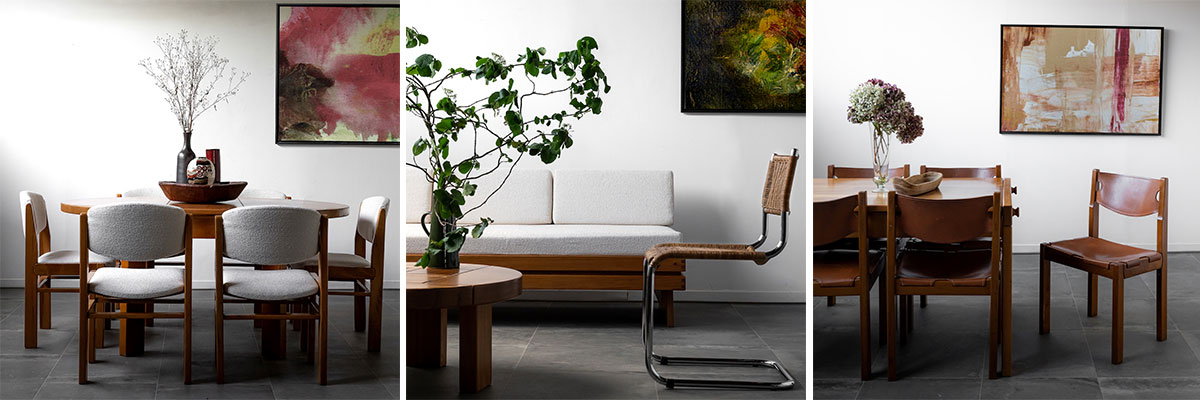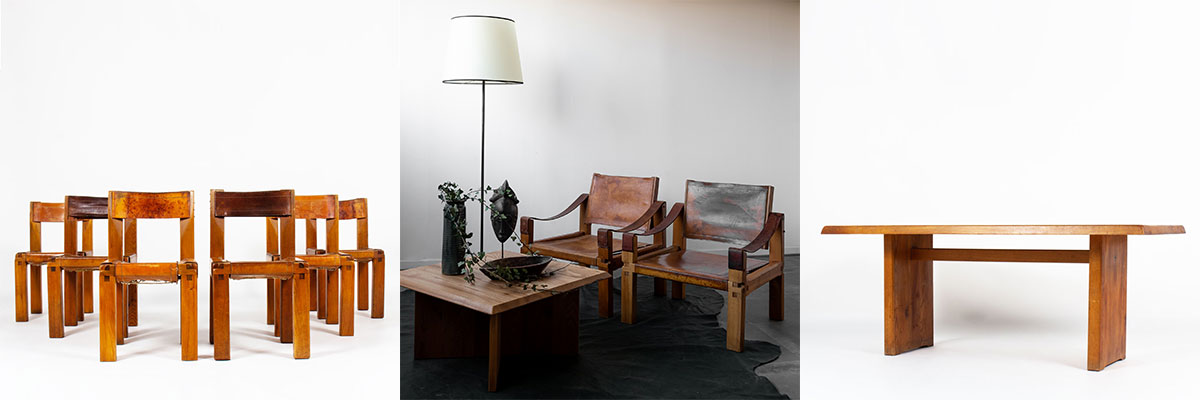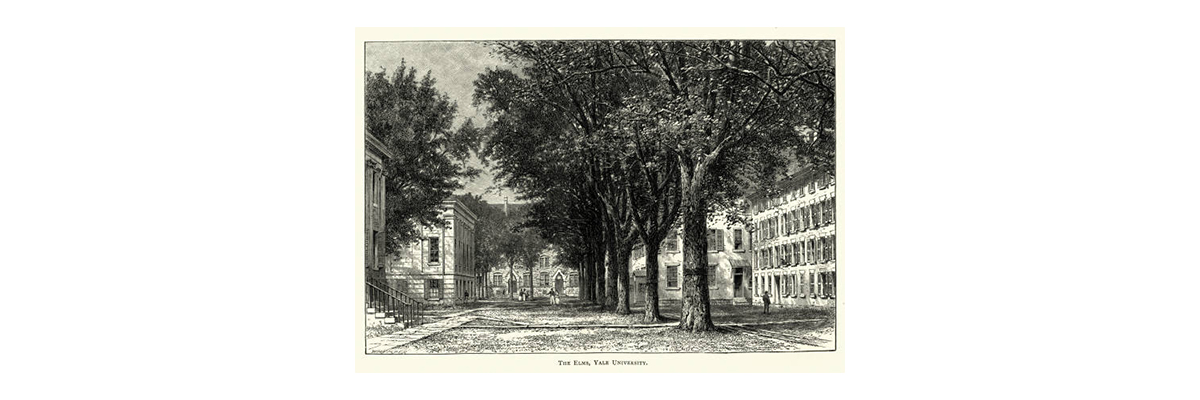Elm, a rare and precious material for exceptional furnishings
Many pieces of everyday furniture are made from oak, pine, ash, birch ... and walnut, mahogany, or even ebony, hold no secrets for antique furniture lovers. But there is one particular species of noble and precious wood that has become very rare nowadays: elm. A unique material for exceptional furniture.
Renown and rarefaction of quality wood
Native to Western Europe and North America, elm first appeared on Earth more than 65 million years ago. Fast growing, easy to grow from a cutting and cultivate thanks to its great adaptability to different soils and climates, elm was a material of choice for joiners and carpenters of the past centuries.
Massively cultivated in Europe, it was used everywhere. As water resistant as oak or alder, it was one of the favorite woods for stilts, waterwheel or watermills. It also was used until the 19th century for boat hulls, carriages and handspike. And its hardness made it an ideal material for screws, carriage wheels, and clogs.
Under François I and Henri IV, the elm was even appreciated as a decorative tree, which is why it is not uncommon to see it, even today, in municipal parks!
Pictures @Gettyimages
But while Paris was home to nearly 30,000 trees, there are only a thousand elm trees left today in the streets of the capital. In the aftermath of the First World War, a disease massively decimated elms in the northern hemisphere. Dutch elm disease is a fungal disease transmitted by wood-boring bark beetles which scatter the spores with which they are covered.
Interior decoration with elm
The most famous piece of elm wood furniture is undoubtedly found at Fontainebleau castle. The King of Rome cradle, Napoleon Bonaparte's son, is fashioned from elm burl; a precious material highly sought after in cabinetmaking. Indeed, these growths of the trunk, used in marquetry as veneer sheets, provide patterns like no other and is reserved for exceptional furniture.
But elm is not only popular for these museum pieces. It is also a very liked material in vintage furniture; a wood to which the years give a unique patina.
Natural elm has therefore found its place in our more contemporary interiors. Chairs, tables, bookcases and sideboards bring a modern and minimalist touch, full of character. In association with a warm and cozy decoration made of woolen skins, accumulation of cushions and chunky throws, for a Scandinavian-inspired decoration. And for a more Wabi-sabi spirit, we match elm wood furniture with raw materials, stone, terracotta and linen.

Inspirations - Pictures @Galerie44
These designers who shaped it
Beautiful, versatile, durable ... the qualities of elm have seduced major publishing houses and artist designers who have made it a material of choice to produce their finest pieces.
Like the French house Regain, a true reference in the universe of brutalist furniture, which made elm furniture manufacturing its specialty in the 1960s to 1980s, notably by collaborating with designer Roland Haeusler.
A brutalist style and minimalist lines, this is also what characterizes all Pierre Chapo's work, always imbued with great inventiveness, such as his famous elm coffee table, T22, says Eye. If painting may have attracted the young Chapo, it is to wood that he will dedicate his career after meeting a marine carpenter who will introduce him to the work of a material that will allow him to express all his creativity. Oak, ash and of course solid elm, will be his three preferred materials to combine his appeal for contemporary design with his love of traditional craftsmanship. In his gallery on “Boulevard de l'Hôpital”, he will exhibit the creations of other designers, such as the Isamu Noguchi’s organic sculptures in which he finds himself, before developing his own furniture-making workshop.

Inspirations - Pictures @Galerie44
Roche Bobois, another French company, also edited elm wood furniture, including designs by the Italian architect Giovanni Luigi Gorgoni. A versatile artist who expresses his creativity and expertise in fields as diverse as architecture and town planning, street furniture and product design. His clients include many governments, international organizations and public administrations.


